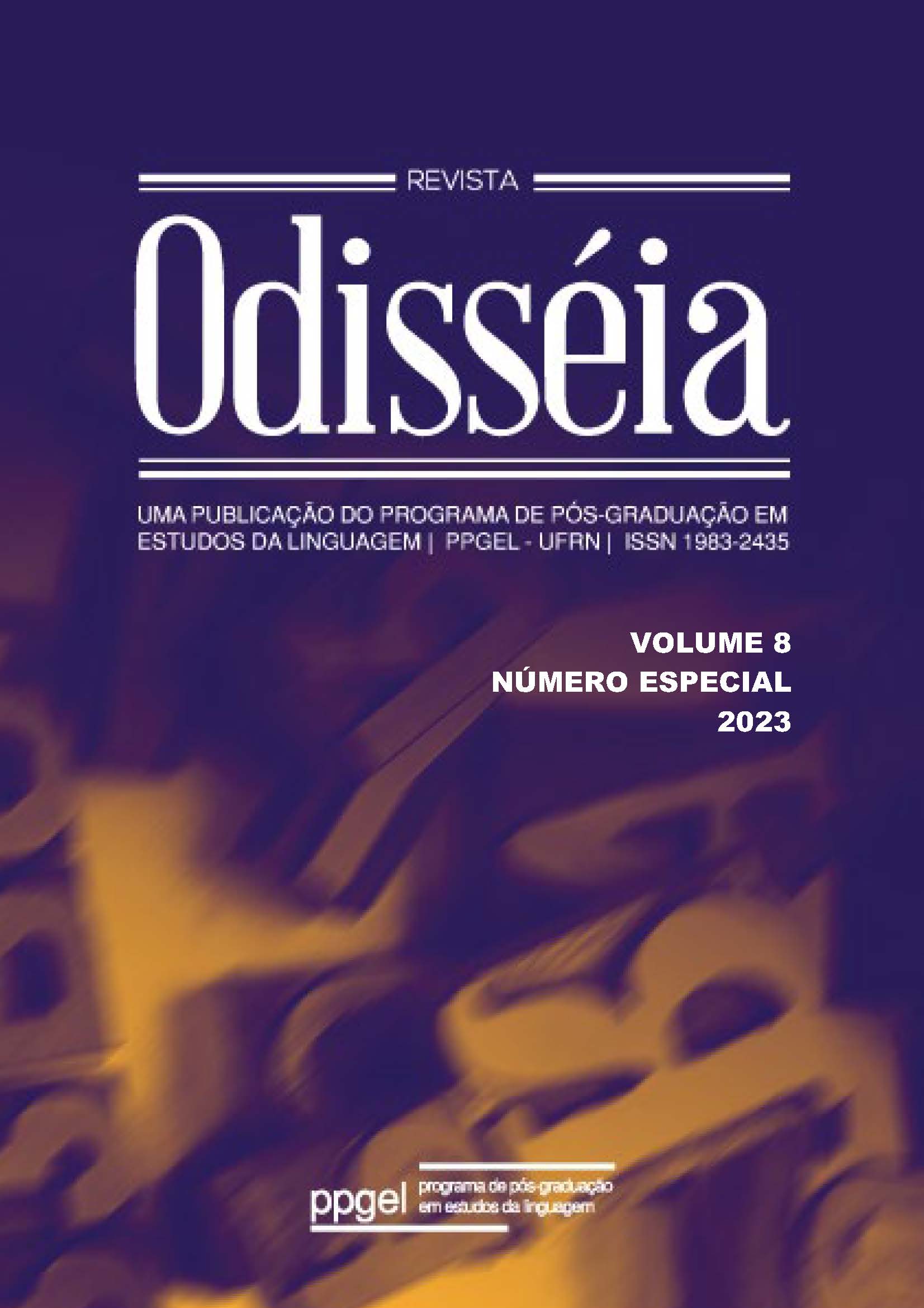Tristes quadros da escravidão: violência no romance La familia del Comendador, de Juana Manso
DOI:
https://doi.org/10.21680/1983-2435.2023v8nEspecialID31793Palavras-chave:
Literatura e Violência, Escravidão, La familia del ComendadorResumo
O romance La familia del Comendador (1854), de Juana Paula Manso, introduz o leitor à exuberante paisagem do Rio de Janeiro do século XIX, ao mesmo tempo que denuncia os conflitos enfrentados por membros de uma abastada família no Engenho de Macacu e na Chácara de Botafogo. Por meio de uma história de amor aparentemente inocente, o romance revela a dura face da escravidão e o racismo enraizado na sociedade brasileira oitocentista. O objetivo deste trabalho consiste em analisar os episódios de violência física no romance, adotando como categorias de análise o narrador e a personagem. Para tanto, nosso estudo tem como base os pressupostos teóricos de Ginzburg (2012, 2013) no campo da Literatura e Violência. Nos fragmentos selecionados, evidenciamos as motivações que dão tom aos quadros de violência pintados no romance, caracterizadas como autoritárias e racistas.
Downloads
Referências
CANDIDO, Antonio et al. A personagem de ficção. 13. ed. São Paulo: Perspectiva, 2014.
DUARTE, Constância Lima. Nísia Floresta presente: uma brasileira ilustre. Natal: Mariana Hardi, 2019.
DUNSTAN, Inés; PITE, Rebekah. Mistress vs Maid: Race, Class, Nation and Boundaries between Women in Argentine Fiction since the Mid Nineteenth Century. Gender & History, v. 30, n. 2, p. 401-422, 2018.
FLORESTA, Nísia. Páginas de uma vida obscura. In: DUARTE, Constância (org.). Inéditos e dispersos de Nísia Floresta. Natal: EdUFRN, 2009. p. 45-83.
GINZBURG, Jaime. Crítica em tempos de violência. São Paulo: EDUSP, 2012.
GINZBURG, Jaime. Literatura, violência e melancolia. Campinas: Autores Associados, 2013.
GRAU-LLEVERIA, Elena; MORALES PINO, Luz Ainai. Redes biopolíticas para la desarticulación del biopoder esclavista en La familia del Comendador de Juana Paula Manso (1860). Cuadernos de Literatura, [S. l.], v. 26, p. 24, 2022. Disponível em: https://revistas.javeriana.edu.co/index.php/cualit/article/view/35750. Acesso em: 14 dez. 2022.
MANSO, Juana. A família do Commendador. A Imprensa. Rio de Janeiro, Ano I, n. 18-23, 15 jan. - 27 fev. 1853. Disponível em: https://bndigital.bn.br/acervo-digital/imprensa/758388. Acesso em: 12 ago. 2023.
MANSO, Juana. A família do Comendador. Tradução de Regina Simon, Miriam Cristine, Luma Virgínia e Maraysa Araújo. Rio de Janeiro: Pinard, 2021.
MANSO, Juana. La familia del Comendador: novela original. Buenos Aires: Imprenta de J. A. Bernheim, 1854.
MANSO, Juana. Los Misterios del Plata: Episodios históricos de la época de Rosas escritos en 1846. Córdoba: Buena Vista Editores, 2011.
MUZART, Zahidé Lupinacci. Uma espiada na imprensa das mulheres no século XIX. Revista Estudos Feministas, Florianópolis, v. 11, n. 1, 2003.
REIS, Maria Firmina dos. Úrsula. Rio de Janeiro: Antofágica, 2021.
SILVA, Regina Simon da. La familia del Comendador: um retrato do Brasil do século XIX, por Juana Manso. Revista Contexto, Vitória, v. 1, n. 37, p. 202-223, 2020.
SOARES, Luiz Carlos. O “Povo de Cam" na Capital do Brasil: a escravidão urbana no Rio de Janeiro do século XIX. Rio de Janeiro: Faperj - 7Letras, 2007.
Downloads
Publicado
Como Citar
Edição
Seção
Licença
Copyright (c) 2023 Revista Odisseia

Este trabalho está licenciado sob uma licença Creative Commons Attribution-NonCommercial-ShareAlike 4.0 International License.

Este trabalho foi licenciado com uma Licença http://creativecommons.org/licenses/by-nc-sa/4.0

















